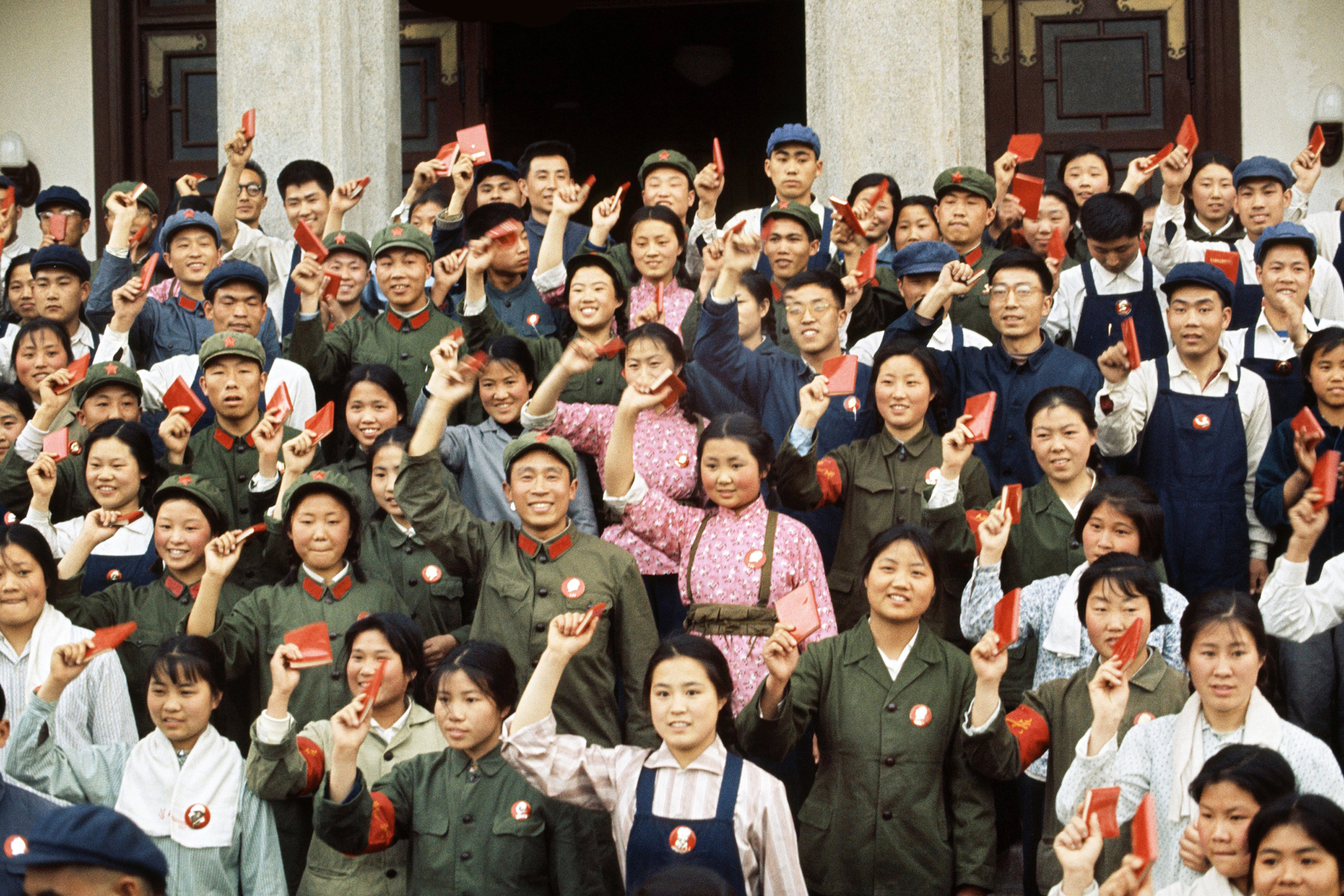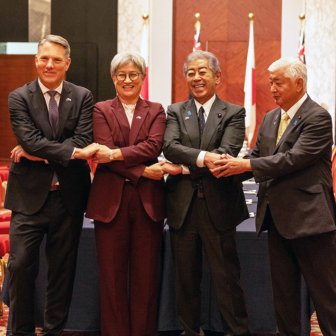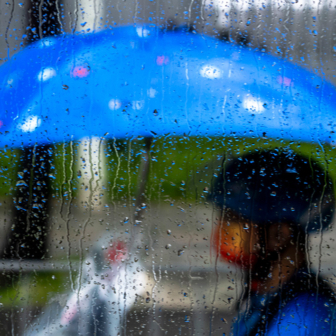The world seemed simpler in the 1990s, after the fall of the Berlin Wall and the events it came to symbolise: the collapse of Soviet-backed regimes in Eastern and Central Europe and their replacement by multi-party democracies, the unravelling of the Soviet Union itself, and the end of the cold war. Many believed the ideological conflicts that had made the twentieth century an “age of extremes” were over, and liberal democracy had won.
Leaving aside abstruse philosophical speculations about the “end of history,” it was comforting for people in wealthy Western democracies to assume that the benefits of liberal democracy and the peaceful resolution of conflict were so self-evident that the liberal-democratic West would gradually gain a worldwide following and the arc of history would bend our way.
But the arc of history has a way of taking perverse twists and detours. The annual reports of the independent nonprofit Freedom House make for sobering reading. Its most recent report, for 2024, found that the last decade saw “dramatic declines in freedom” in “every region of the world.” In fact, 2024 marked the nineteenth consecutive year in which Freedom House found an aggregate decline in freedom. More countries have experienced a decline every year in this period than have become freer, and during 2024 political freedoms deteriorated for 40 per cent of the world’s population.
Freedom House rates eighty-five countries (out of 195) as free, and fifty-one as “partly free.” The United States is rated as free, but with a score of 84 per cent (Canada is on 97 per cent, Australia 95 per cent). One wonders what the US score will be next year, after twelve months of Trump’s second term. A generation after the fall of the Berlin Wall, nine European countries are rated as partly free, and two (Russia and Belarus) as unfree. The Russian-occupied parts of Ukraine score minus 1 out of 100. And in many free countries in Europe, the far right has been gaining ground in elections, or is even participating in governments.
It could be objected that the metrics formulated by one organisation are an arbitrary yardstick, but Freedom House’s methodology is transparent, and it backs up its estimates with a wealth of evidence on factors including the conduct of elections, attacks on the media and political opposition, corruption, and the erosion of the rule of law.
Against this backdrop, the current wave of books focusing on the fall of modern democracies and the rise of dictatorships is hardly surprising. The last couple of years have seen several new accounts of the fall of Germany’s Weimar republic and the coming to power of Nazism, for example, and many more can be expected as the centenary of Hitler’s takeover of power approaches. Histories of modern dictatorship are suddenly of more than antiquarian interest.
Two short new books — Sheila Fitzpatrick’s The Death of Stalin and Linda Jaivin’s Bombard the Headquarters! The Cultural Revolution in China — provide vivid accounts of two of the twentieth century’s most important dictatorial regimes at critical junctures. In each case, the authors consider how the events they describe continue to exert influence.
Sheila Fitzpatrick should be declared a national treasure, although her work is probably better known outside Australia than within. She is perhaps the world’s leading historian of the Soviet Union, especially of the Stalin period. She began researching Soviet history in the 1960s, when it was still possible to meet and interview veterans of the Bolshevik revolution and the Soviet archives were just starting to open for Western scholars. Her lively intellectual curiosity and cool scepticism towards all kinds of received wisdom have helped her reshape how we understand Soviet history.
Breaking with Western scholars’ traditional preoccupation with leaders, elites and top-down party hierarchies, Fitzpatrick’s work has been distinguished by an interest in the experiences of everyday people. Her 1982 history of the Russian revolution (often revised and reprinted since) showed that Stalinism had a certain kind of popular constituency — the upwardly mobile younger generation of workers who joined the Communist Party during Stalin’s first Four-Year Plan and increasingly displaced older, often more educated Bolshevik cadres.
Although The Death of Stalin, like her 2015 study of Stalin’s inner circle, On Stalin’s Team, focuses primarily on the leadership group of the Soviet Union, Fitzpatrick is still attentive to the reactions of ordinary Soviet citizens to events in the Kremlin. Surprisingly large numbers of people expressed grief at the dictator’s death (not just in the Soviet Union but also in East Germany and other Soviet bloc states) and attempts to reform the Soviet Union attracted popular opposition (partly because the Gulag inmates released after Stalin’s death included hardened criminals as well as dissidents). Fitzpatrick also finds evidence of popular support for Stalin’s antisemitism during the alleged “Doctors’ Plot” of his last months.
Fitzpatrick is well aware that Stalin’s death is now associated with the 2017 Armando Iannucci film that shares her title. Iannucci’s film memorably plays the macabre subject matter as a black comedy, with the members of Stalin’s entourage starting to jostle for power while their former leader lies unconscious and expiring after presiding over another vodka-soaked party with his entourage. In the film, Stalin’s entourage speak and act like gangsters from a Monty Python sketch. Fitzpatrick happily works a discussion of the film into her narrative, but points out that government continued to function smoothly and efficiently after Stalin died, in contrast to the disarray the film suggests.
Unlike the intrinsically chaotic Nazi regime, in which Hitler disdained anything resembling orderly cabinet government — in fact, cabinet ceased to meet — the Soviet leadership was accustomed to the forms and habits of collective government, even if Stalin was the much-feared first among equals. The succession struggle ended after nine months with the secret police chief Lavrenty Beria (convincingly portrayed as a creepy predator in the film by Simon Russell Beale) being arrested and executed.
Rather counter-intuitively, Beria was perhaps the foremost advocate for reform after Stalin’s death, as Fitzpatrick points out. His removal was a setback for communist reformers in the Soviet bloc, although Stalin’s eventual successor, Nikita Khruschchev, would launch a de-Stalinisation and reform campaign in 1956.
This is one of the revelations of Fitzpatrick’s book: the system could survive the dictatorial leader (at least for a generation) and it was also capable of reforming itself, at least up to a point. Popular assumptions of “totalitarianism” might suggest complete dependence on the will of the dictator and an incapacity for reform. Fitzpatrick’s concise account throws such assumptions into doubt, as well as revealing the degree of collaboration that existed between the Soviet state and sections of its population.
Many Western observers of the Soviet Union were slow to pick up on the degree to which the Soviet system changed after Stalin’s death. Fitzpatrick even suggests that the persistence of hardline anti-Soviet feeling in the United States in the 1950s meant a chance of East–West détente was missed well before it eventuated in the 1970s. It would be interesting to see these reflections developed at greater length. Fitzpatrick’s concluding chapter considers Stalin’s posthumous reputation and influence.
Stalin has been making a quiet comeback in Russia in the twenty-first century. In contrast to those Western leftists who respect Lenin but regard Stalin as having perverted and betrayed communism, Putin seems to view Lenin as a disruptive, destructive figure who helped to bring about the break-up of the old Russian empire, while Stalin is to be admired for making Russia strong and great.
Just as Stalin’s reign still resonates in Russia, the shadow of the Cultural Revolution continues to hang over China. Jaivin is a noted scholar of modern Chinese culture and politics, as well as the author of several novels (including Eat Me and Rock ’n’ Roll Babes from Outer Space). As one would expect, her account of the cultural revolution is compulsively readable, and even entertaining when it isn’t recounting horrific events. (Among other revelations, we learn that Red Guards wanted to change traffic lights so that red meant “go” until saner heads prevailed.)
Stalin’s rule had its purges, with some 700,000 people executed under Beria’s predecessor Nikolai Ezhov in the purge that reached its climax in 1937 (with many more consigned to the Gulag). But it is hard to find a precise parallel with the collective insanity of the Cultural Revolution that raged from 1966 until Mao’s death in 1976. Mao was perhaps unique among history’s dictators in the way he sought to exercise absolute power while simultaneously inciting mass unrest and disorder. In September 1967, when large swathes of the country were sliding into anarchy, he declared: “the situation around the country is not just good but excellent, and more excellent than it ever has been before.”
Mao had apparently been concerned that the Chinese Communist Party was losing its revolutionary zeal after seventeen years in power. He feared the party was drifting into the sort of “revisionism” he perceived as prevailing in the Soviet Union under Khrushchev’s “thaw” (which had recently come to an end with Khrushchev’s fall from power in 1964) and he sought to shake up the party by siding with its most radical younger elements.
He set up a small group called the Cultural Revolution Leading Group, which included his fourth wife Jiang Qing. Soon, the group was encouraging militant students to form “Red Guards” in schools and universities. Before 1966 was over, the Red Guards numbered anywhere between fifteen and twenty million. They started to unleash a reign of terror against perceived counter-revolutionary elements, starting with their own teachers or lecturers.
Rage was directed against academics and the cultural elite, who were perceived as reactionary. Jaivin describes “struggle sessions” that culminated in harrowing episodes of torture and murder. By the end of August 1966, the Red Guards had killed an estimated 1800 people in Beijing alone and were engaged in expelling hundreds of thousands from the cities.
Violence was soon directed against any manifestation of old, pre-revolutionary culture. Imperial tombs were ransacked and desecrated. Temples and other religious edifices were destroyed or vandalised from Beijing to Tibet. Even the tomb of the venerated Chinese sage Confucius was blown up and his ancestral home ransacked, with ancient manuscripts and artefacts destroyed in the process. When militant Red Guards started to attack the Forbidden City in Beijing, however, Mao’s prime minister, the wily survivor Zhou Enlai, called troops in to guard the complex. The military protection had to stay in place for five years.
Mao’s government oscillated between fanning revolutionary unrest and trying to rein in excesses too damaging to the economy. When Shanghai workers proclaimed a revolutionary commune-based government in February 1967, the authorities stepped in to replace the workers’ self-government with a committee consisting of party officials, military personnel and workers’ representatives. Increasingly, the People’s Liberation Army became active in political conflicts. In Wuhan and elsewhere, a virtual civil war broke out between rival factions of the army.
Violence was also directed against ethnic minorities. Tens of thousands of people were killed in Inner Mongolia in a campaign to destroy a non-existent Inner Mongolian separatist party.
Universities were violently disrupted. The highly prestigious Tsinghua University in Beijing was turned into a heavily armed encampment, with engineering students proving adept at improvising weapons, including tanks. A civil war between two factions raged on the campus for a hundred days in 1968 until the Communist Party’s central committee mobilised tens of thousands of factory workers to take over the remains of the campus.
Education was set back for half a generation by the campaign to force some sixteen million young people to abandon schools and universities to work alongside the peasants. (These included today’s Chinese Communist Party leader Xi Jinping, who once claimed to have been the only member of his cohort to have had a smile on his face as he set out for the countryside.)
Although the Communist Party Congress in 1969 proclaimed an end to the Cultural Revolution, Mao instigated another wave of purges the following year, resulting in an estimated 200,000 deaths, followed by yet another purge.
Like Fitzpatrick, Jaivin concludes her book with reflections on how these events have been dealt with in subsequent decades. The Cultural Revolution is still hedged by taboos within China, even after villages have repaired their ancestral temples and other cultural monuments have been carefully restored. Jaivin notes recent examples of a revival of the Mao personality cult that reached such extraordinary heights during the cultural revolution. Mao’s collected works have recently become bestsellers again.
Both Fitzpatrick and Jaivin highlight the complexity of the legacies of these authoritarian leaders, and how much these two events can teach us about the inner workings of dictatorships.
When dictatorships collapse, those who are left behind are keen to place all responsibility on the fallen leader, who is portrayed as having held an entire people captive. But no dictatorship has been able to succeed without the active participation of significant sections of the population. Both Stalin’s regime and the Cultural Revolution were sustained to a great extent by the willingness of many thousands of people to collaborate with the regime by denouncing their fellow citizens. Even in Nazi Germany, the Gestapo could never have controlled the population as effectively as it did without the active cooperation of literally hundreds of thousands of German citizens who showed themselves willing to denounce each other for crimes against the regime.
With democracy seeming increasingly vulnerable in so many countries, these books serve to remind us of the obscure attractions of dictatorships: the appeal to naked national power and grandeur, the deep-rooted suspicion of independent thought, the admiration for a leader who can project an image of unlimited strength beyond all legal constraints, the easily awakened mistrust of foreigners within and outside national borders. Not even the world’s first and most powerful democracy seems wholly immune to such temptations. •
The Death of Stalin
By Sheila Fitzpatrick | Black Inc. | $27.99 | 128 pages
Bombard the Headquarters! The Cultural Revolution in China
By Linda Jaivin | Black Inc. | $26.99 | 128 pages




